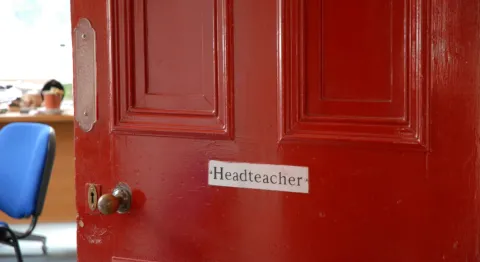A Headteachers guide to the first 100 days in your new role
Starting a new role as a Headteacher is an exciting, if not daunting, task. Whether you’re a seasoned Head taking on a new challenge or this is your first time in role, planning your first 100 days is a helpful way to set yourself up for success.
100 days is just over 3 months; a key time to get settled in, build rapport and start working towards your long-term goals. It’s also an important time for a leader to establish themselves, build momentum and a chance for both sides to decide if it’s a good fit.
With Headteacher vacancy rates on the rise and 37% of Heads leaving in the first 5 years, there will be many School Leaders entering new roles this year who are looking to get the transition right.
Gleaned from over 10 years of experience working with 1500 schools, we’ve put together top tips and expertise on how to make the most of your first 100 days in a new Headship.
Before your first day
It’s up to you to decide when your first 100 days really start! Before your first day on site, you’ll already be getting up to speed and getting into the right mindset.
From auditing all the information you’ve been given, including the school’s website and OFSTED reports, to agreeing on your onboarding schedule with the new school, there’s plenty to be doing.
If you’re able to, booking in handover time with the outgoing Head is a great way to get yourself up to speed before term starts. Speaking with the board of governors and your key staff members is a good place to start too, not only to learn more about the school but to start building rapport with your new colleagues.
And don’t forget to make sure you’re comfortable with the practical side of things. It’s helpful to make sure you know: what your commute will be like, how will your first few days and weeks be structured, do you know where to go on your first day, and that you have all the snacks, drinks and extra bits you need to feel comfortable all day. They may seem small but looking after yourself from the start is important.

Creating a 100 day plan
Once you’re ready for your first day, it’s time to think about your plans for the school and the impact you want to make as Headteacher.
This will be highly dependent on the school you’re joining and the unique needs of the pupils who attend. Your goals may be around improving results, attendance or fostering community, it’s up to you to decide what’s best for the school. However, there is a common structure that any leader can use to set a 100 day plan that can be adjusted as you need.
What to include in a 100 day plan:
1. Current situation
Firstly, think carefully about the current state of the school you’re joining. What are its challenges, what data points do you have and what are the key areas that need improvement.
In this stage, try not to think about your long-term plans or your own personal ideas and focus on clearly outlining the current state of play. This not only helps you to think objectively about what your priorities are, but acts as a great reference point to look back on at a later date.
2. Goal setting
Now it’s time to think about goals. In your first 100 days, you have the chance to achieve some short-term goals that build confidence and trust in your leadership, as well as set yourself up to hit mid and long term goals over the years.
Start by making a list of your short, medium and long term goals for both the school and your role. If the list becomes too long, you can prioritise each category from top to bottom, focusing on the top 3 priorities to start.
It can be helpful to put these goals somewhere you’ll see them regularly so you can keep track of your progress, as well as sharing them with your team and school for accountability and to get buy-in.
3. Stakeholders
Remember, as a Head you’re only as good as your team. Identifying your key team members who can help you reach each goal is essential. While you’ll want to build relationships across the board too, being focussed about who you need for each target is important.
You’ll also want your team on board with what you want to achieve. Making sure they understand the what and the why and how you get there together is important to align on from the start.
We recommend aiming to have at least 15 minutes to chat with each member of your team, it’s a powerful way to start building relationships from the get-go.
4. Define key messages
Defining your key messages is important to do early on. These will align to your goals and the direction you want the school to go in.
A top tip is to make sure your key messages are simple to understand and easy to repeat. You may have a longer version in your plan for you, but the message you communicate to others should be as succinct and digestible as possible. Repetition can make you feel like a broken record but it really does help people to remember and value your message if you repeat it regularly and in the same language each time.
Similarly, think about your personal values and the values you want the school to embody. Repeating these and aligning them with your activities will get the message out across the school. Redecorating boards, key areas of the school and the website will make your values and message clear to the whole community.
5. Communication
This brings us to the next point, a communication plan. Review what’s available to you and make a plan of how you’ll be communicating with your team, students and parents at home in your first 100 days.
Again, make sure your message is aligned, consistent and easy to digest so that it’s easy to understand what kind of leader and what direction you are setting for the school.
6. Quick wins
It’s natural to be nervous in a role and to make mistakes when you’re starting out. That’s why a great tip is to intentionally seek out quick and simple wins . This will not only build your confidence but show your team what you can do together. It’s a necessary morale booster that helps ease teams through transitionary periods.
Plus, it’s helpful to remember that people often over (and under) estimate how much work goes into different tasks. Something that may be a relatively simple win from your perspective will still be impressive to others who don’t know that it was a quick win at all.
7. Measure success
Finally, and importantly, setting out how you’ll measure success is essential. If you don’t know what good and great looks like, how will you know when you’ve achieved it?
Setting up key review points in your first 100 days will help you review and track progress towards goals. Plus, don’t forget to think about how you’ll share your successes with your school community to build momentum and community spirit.
Once you’ve answered these key questions, it can be helpful to break down your actions into daily, weekly and monthly tasks. Think about how these will change over time and come up with a rough timeline of what to expect.

Key takeaways and advice from school leaders:
- Change takes time, be patient!
- Prioritise building rapport with your team
- Repeat key messages simply and often
- Look ahead but don’t forget to appreciate where you’re at now
- Find a mentor or coach to work with you
- Keep your vision and goals in focus
- You can achieve a lot in 100 days, but not everything so pace yourself
What if you’re joining a school in special measures?
For many Headteachers, taking on a school in special measures or failing school is a tough but highly rewarding career move. In this scenario, the first 100 days are especially important as it’s your chance to set the tone and establish yourself as a leader in a challenging situation.
You may need to act faster in a school in crisis and make some bolder decisions than you would elsewhere. This article by Simon Botten in The Headteacher, has some incredibly valuable insights first-hand from a Head who’s tackled not 1 but 2 failing schools. Packed with advice, one of the key takeaways Botten gives is to prioritise environment, then behaviour and then learning. We highly recommend reading the full piece for more.
When starting a new Headteacher role, with preparation and planning, you can feel confident in your abilities to lead the school to success. By creating a 100 day plan and committing to it, you can set yourself up for a successful first term as Head.
If you’re looking for extra support for your school, online tutoring can provide a flexible and high-impact intervention. Get in touch with our team today to find out more.


